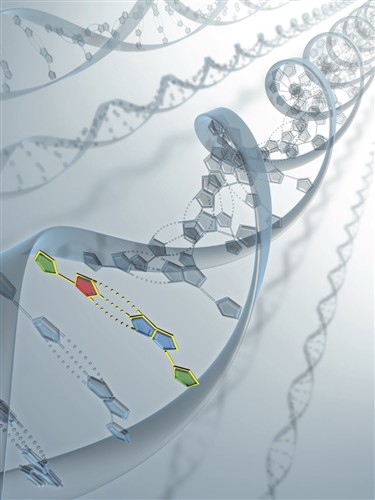Information and Intelligence
 After the early 1960s, further discoveries made clear that the digital information in DNA and RNA is only part of a complex information processing system – an advanced form of nanotechnology that both mirrors and exceeds our own in its complexity, design logic and information storage density.
After the early 1960s, further discoveries made clear that the digital information in DNA and RNA is only part of a complex information processing system – an advanced form of nanotechnology that both mirrors and exceeds our own in its complexity, design logic and information storage density.
Where did the digital information in the cell come from? And how did the cell’s complex information processing system arise? Today, these questions lie at the heart of origin-of-life research. Clearly the informational features of the cell at least appear designed. And to date, no theory of undirected chemical evolution has explained the origin of digital information needed to build the first living cell. Why? There is simply too much information in the cell to be explained by chance alone. And the information in DNA has also been shown to defy explanation by reference to the laws of chemistry. Saying otherwise would be like saying that a newspaper headline might arise as the result of the chemical attraction between ink and paper. Clearly ‘something else’ is at work.
Yet, the scientists arguing for intelligent design do not do so merely because natural processes, chance, laws or the combination of the these - have failed to explain the origin of the information and information-processing systems in cells. Instead, they also argue for design because we know from experience that systems possessing these features invariably arise from intelligent causes. The information on computer screens can be traced back to a user or programmer. The information in a newspaper ultimately came from a writer - from a mental, rather than a strictly material, cause. As the pioneering information theorist Henry Quastler observed, 'information habitually arises from conscious activity.'
This connection between information and prior intelligence enables us to detect or infer intelligent activity even from unobservable sources in the distant past. Archeologists infer ancient scribes from hieroglyphic inscriptions. SETI's search for extraterrestrial intelligence presupposes that information embedded in electromagnetic signals from space would indicate an intelligent source. As yet, radio astronomers have not found information-bearing signals from distant star systems. But closer to home, molecular biologists have discovered information in the cell, suggesting - by the same logic that underwrites the SETI program and ordinary scientific reasoning about other informational artifacts - an intelligent source for the information in DNA.
DNA functions like a software program. We know from experience that software comes from programmers. We know generally that information - whether inscribed in hieroglyphics, written in a book or encoded in a radio signal - always arises from an intelligent source. So the discovery of information in the DNA molecule provides strong grounds for inferring that intelligence played a role in the origin of DNA, even if we weren't there to observe the system coming into existence.
This article by Dr Stephen Meyer, Director of the Centre for Science and Culture,
Discovery Institute, Seattle, USA,
first appeared in the National Post in Canada on Dec 1st 2005
Image credits:
Thumbnail - © Acroterion - This file is licensed under the Creative Commons Attribution-Share Alike 3.0 Unported licence.
DNA Strands - licence to use held by C4ID